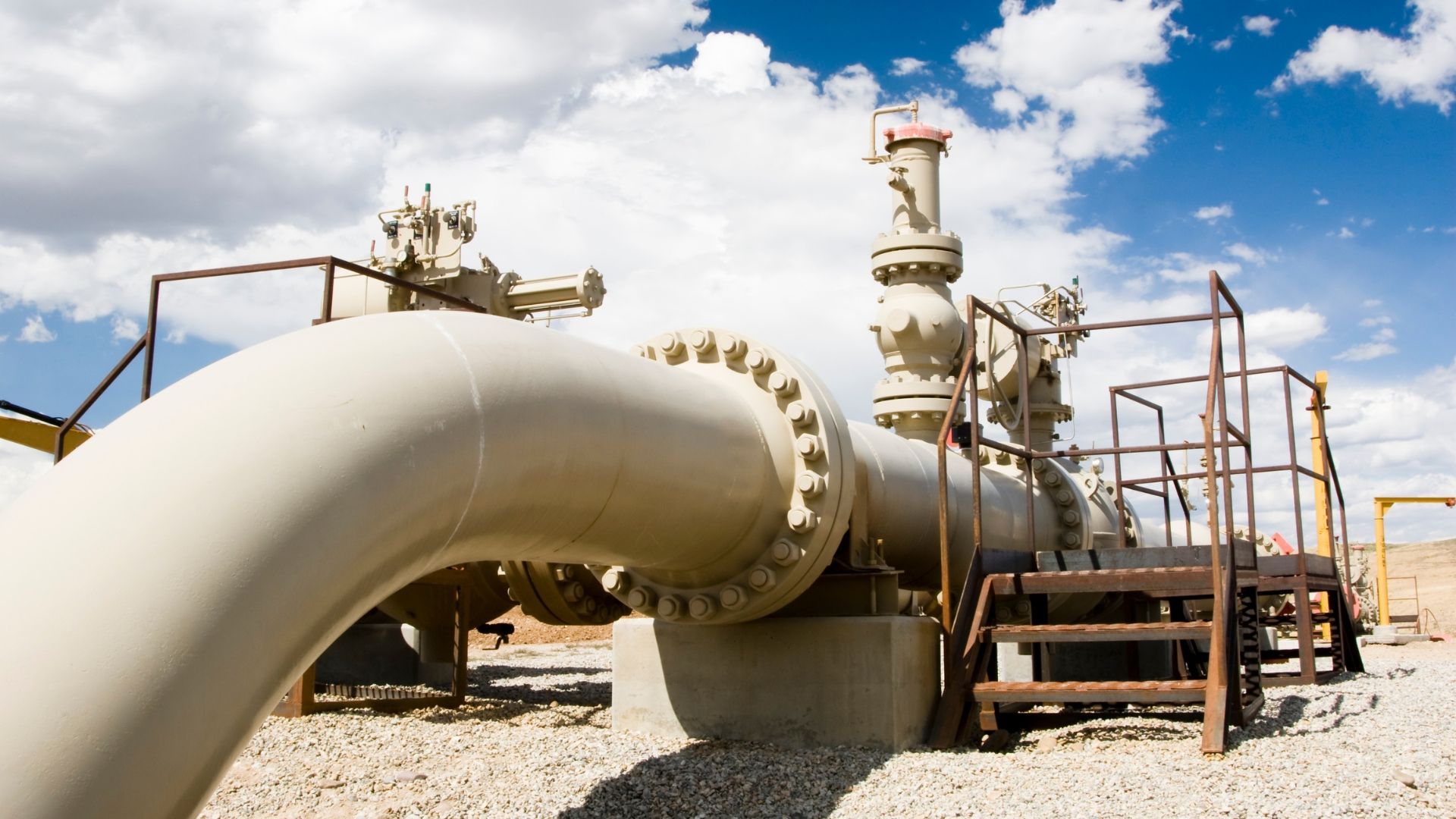If you take helium gas and you cool it at atmospheric pressure to 4.2 K in becomes a liquid. Keep cooling to 2.2 K and the helium enters its superfluid phase, called helium II.
Superfluid helium has several very useful properties and is used in science and technology in multi-tonne quantities today. In particular, helium II is an exceptionally good conductor of heat and this combined with its low temperature means that the superfluid is ideal for cooling components made from superconducting materials.
To learn more about how helium II is used in science and industry, Physics World spoke to John Weisend II who is a senior accelerator engineer at the European Spallation Source and an adjunct professor of engineering at Lund University in Sweden. He is author of Superfluid: How a Quantum Fluid Revolutionized Modern Science and he shares his passion for helium II with Hamish Johnston.

The largest use of helium II is currently in particle accelerators, how is it used at these facilities?
Helium II has two main uses in particle accelerators. One is to cool superconducting electromagnets to temperatures below 2.2 K. These create the large magnetic fields that bend and focus particle beams. The conducting wires in these magnets are usually made from niobium–titanium, which becomes a superconductor below about 9 K. However, further cooling allows the magnets to support higher current densities and higher field strengths. As a result, almost all the magnets on the Large Hadron Collider (LHC) at CERN are cooled by helium II.
The second main use of helium II at accelerators is to cool superconducting radio-frequency (SRF) cavities, which are used to accelerate particles. These are made from niobium, which is a superconductor at temperatures below about 9 K. Again, these cavities perform much better at superfluid temperatures, where they use less energy to achieve the same acceleration.
An important benefit of using helium II to cool magnets and SRFs is the superfluid’s very high effective thermal conductivity. As well as making it very efficient at removing heat, the high effective conductivity means that helium does not boil in the bulk – unlike normal liquid helium. This confers great advantage in cooling, particularly when it comes to SRF cavities. This is because the cavities are resonant devices and can be detuned by mechanical vibrations caused by boiling.
While CERN is currently the biggest user of helium II, it is also used at other accelerators worldwide. How will it be used at your institute, the European Spallation Source (ESS), which will be up and running next year?
Like existing spallation sources in the UK, US, Switzerland and Japan, the ESS will accelerate protons to very high energies in a linear accelerator. These protons will then strike a tungsten target, where neutrons will be created by the spallation (fragmentation) of the target nuclei. These neutrons with then be slowed down so that their de Broglie wavelengths are on par with the separations of atoms in solids and molecules. Such neutrons are ideal for experiments that explore the properties of matter.
The ESS accelerator is about 400 m in length and 90% of the acceleration will be done by SRF cavities operating at 2 K. The superfluid is created by a helium refrigerator providing up to 3 kW of cooling at 2 K.
Other accelerator facilities that use superfluid cooling include the Thomas Jefferson Laboratory in the US and the European X-ray Free Electron Laser in Germany. A future International Linear Collider – a possible successor to the LHC – would also employ superfluid-cooled SRFs.
While superfluid-cooled magnets are used in particle accelerators, that was not their first application.
That’s right. They were first designed for use in the Tore Supra tokamak, which began operation in 1988 in France. It has since been upgraded and called WEST, which operates today. Tore Supra, like other tokamaks, used magnetic fields to confine a hot hydrogen plasma. The ultimate goal of researchers working on tokamaks is to develop a practical way to harness nuclear fusion as a source of energy.

Tore Supra’s designers wanted to create longer-lasting plasma pulses and realized that this would not be possible using conventional magnets. They saw superfluid-cooled superconducting magnets as the way forward. The Tore Supra team worked out how to handle liquid helium and also they also developed a piece of technology called a cold compressor that would allow them to efficiently and reliably get down to 2 K. These two developments showed that it was possible operate superfluid-cooled magnets.
Helium II has also been used in space, what was the first mission to be superfluid cooled?
The first real use of helium II in space was to cool a space telescope called the Infrared Interferometer Spectrometer and Radiometer (IRAS). This mission was launched in 1983 by the US, the Netherlands and the UK and it surveyed the entire sky at infrared wavelengths. The atmosphere absorbs infrared light, which is why the telescope was launched into space. Once in orbit, its sensors must be kept as cold as possible to detect low levels of infrared light.
This cooling was done using helium II and mission designers had to overcome significant challenges such as how vent helium vapour when it is mixed in with blobs of liquid in a low-gravity environment.
IRAS was a watershed mission in astronomy because nobody had so extensively observed the universe in these infrared wavelengths before. Astronomers could peer through dust clouds and see objects that had been invisible to other telescopes.
IRAS observed the universe for 300 days before its superfluid ran out, but a decade later NASA was able to transfer liquid helium in space. How was that done?
Yes, that was a project called Superfluid Helium On-Orbit Transfer (SHOOT), which carried superfluid helium onboard a Space Shuttle. The demonstration involved transferring superfluid from a full dewar to an empty dewar in microgravity. This was done using a pump that made use of the “fountain effect” in helium II.
How does the fountain effect work?
The effect can be understood in terms of the two fluid model, which describes helium II as having a superfluid component and a normal fluid component. These aren’t real physical phases within helium II, but rather provide a convenient way of understanding many of its mechanical and thermal properties.
The effect occurs when two regions of helium II are separated by a porous plug with micron-sized channels. If the helium II in one region is heated and the other region is cold, the superfluid component will move through the porous media towards the heater. This is possible because the superfluid component has zero viscosity and can move without resistance through the tiny channels – something that the normal fluid component cannot do.

In the heated region, some of the superfluid component will become normal. However, the normal component is viscous and cannot exit the warm region via the porous plug, so pressure builds up. This pressure can be used to pump helium II without the need for mechanical components.
SHOOT was an important demonstration of how helium II could be used transferred in space. However, researchers realized that it is more cost efficient to launch experiments with larger dewars and lower heat loads, than to refill a dewar during a mission.
Helium II also has the ability to flow up the wall of a dewar, but despite its exotic properties a superfluid is relatively easy to handle in bulk. Why is that?
Research done in the 1970s and 80s showed that bulk helium II has essentially the same fluid mechanical properties as a conventional fluid – something that can also be explained by the two fluid model. When helium II flows, quantized vortices in the superfluid component interact with the viscosity of the normal fluid component. The result is that the bulk properties are the same as a conventional fluid.
This is tremendously helpful to engineers like me, I suppose we can be thankful that sometimes the universe is kind. The standard engineering rules that are used to design fluid-handling systems also apply to helium II – rules that help use chose components such as pipes, pumps and valves for a given system. The only instances when we need to consider the special properties of helium II are when we are transferring heat, using porous media or creating thin films of the superfluid.
There are several Nobel Prizes for Physics that were made possible by helium II cooling. Do you have a favorite?
For me it’s the 1996 prize, which went to David Lee, Douglas Osheroff and Robert Richardson for their discovery of superfluidity in helium-3. The superfluid that we have been talking about so far in this interview is helium-4, which is by far the most abundant isotope of the element. Helium-4 is a boson and bosonic atoms are able to condense into the lowest quantum energy state of the system, creating a superfluid.
Helium-3 atoms are not bosons, but are fermions. These atoms cannot undergo this Bose–Einstein condensation directly to create a superfluid. However, it the early 1970s Lee, Osheroff and Richardson showed that helium-3 can condense into a superfluid at the much lower temperature of 2.7 mK. The physical mechanism for this is similar to what occurs in superconductors, where at low temperatures, fermionic electrons pair up. These “Cooper pairs” are bosons, so they can condense to create a superconductor in which the electrons can flow without resistance.
Because of its magnetic properties, superfluid helium-3 is a much more complicated substance than superfluid helium-4. It has three different superfluid phases, rather than the one phase of helium-4.
What I like about this discovery is that the trio weren’t searching for superfluity in their experiment. Instead, they were studying the properties of solid helium-3 at very low temperatures and high pressure. I really like the fact that they were looking for one thing and found something entirely different. Often, the most exciting scientific discoveries are made this way.







